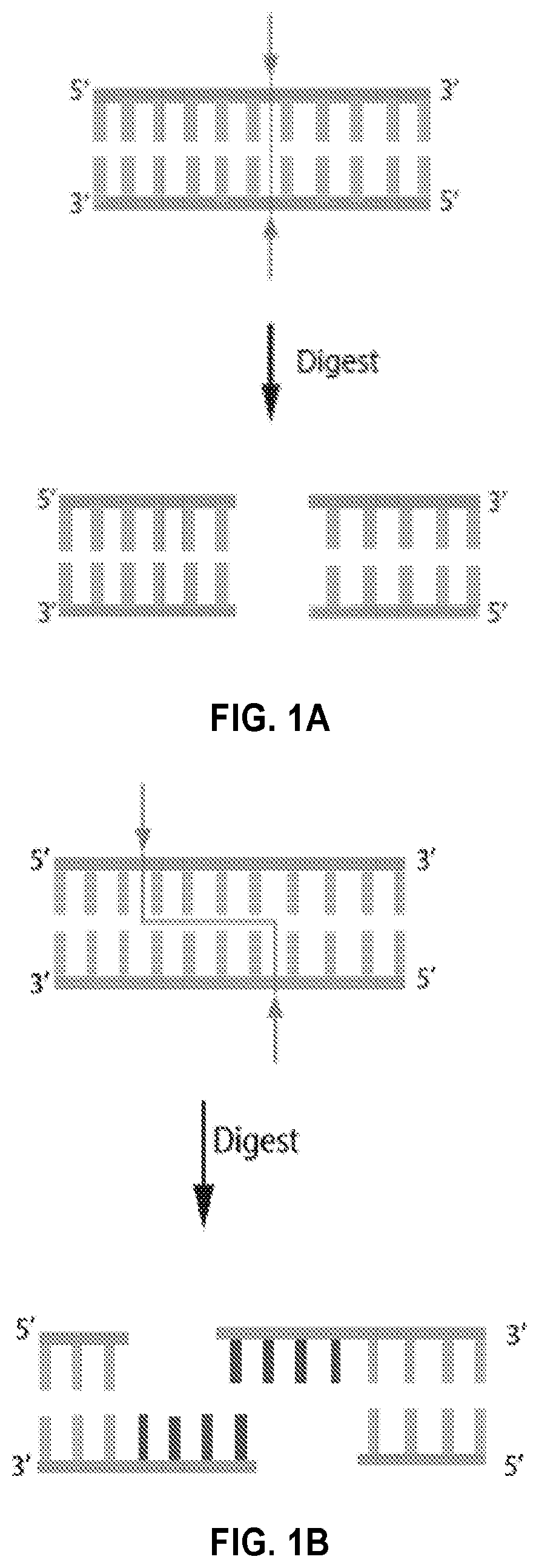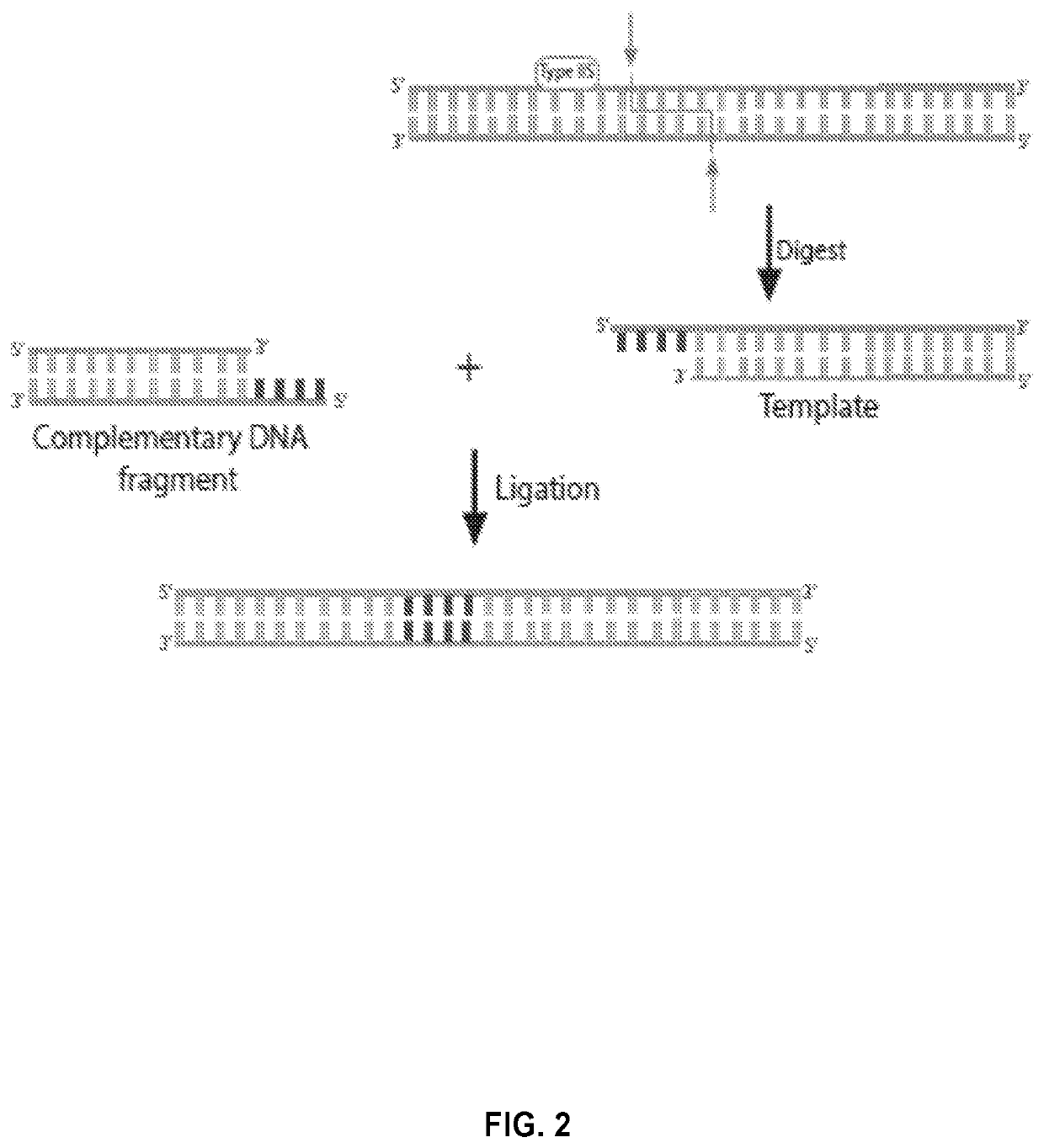Novel systems, methods and compositions for the direct synthesis of sticky ended polynucleotides
a polynucleotide and polynucleotide technology, applied in the field of direct synthesis of sticky end dna, can solve the problems of inefficiency of most of the methods, inability to find unique restriction site sequences when ligating larger gene assemblies, and inability to assemble multiple fragments in one reaction
- Summary
- Abstract
- Description
- Claims
- Application Information
AI Technical Summary
Benefits of technology
Problems solved by technology
Method used
Image
Examples
example 1
ion Using Chemically Modified Blocking Primers to Produce 5′ Sticky Ended DNA Fragments
[0089]As shown in FIG. 4, using normal primers in a PCR will produce blunt ended DNA fragments. As generally shown in FIG. 5, in one embodiment of the inventive technology, the present inventors generated chemically modified primers, that when used in a standard PCR protocol would result in steric hinderance of the polymerase on the template strand, leading to 5′ single stranded overhangs, thus, the ability to create sticky ended DNA fragments from a PCR.
[0090]As demonstrated in FIGS. 6A-B, exemplary chemically modified primers, also referred to as blocking primers, were constructed to include a single-oxotetradec-1-yl (OXP) phosphate group modification adhered to the phosphate group on any desired deoxynucleotide of the primer.
example 2
for OXP Reactivity in Modified Blocking Primer
[0091]It has been generally indicated that OXP modified primers in a PCR buffer solution at 95° C. have a half-life of around 8.5 minutes. Notably, as outlined in FIG. 7, the OXP group may become reactive at high temperatures resulting in complete dissociation from the DNA phosphate backbone. The buffers used in PCR have an acid-base composition. When heated, the base in the solution may be reacting with the OXP group causing the formation of a carbanion intermediate. The carbanion is unstable, transferring electrons to form a double bond, therefore pushing electrons to the electronegative oxygen. The oxygen, now negative and reactive, may force the OXP modification to rapidly form a favorable 5 ring cyclic compound, cleaving completely from the DNA.
example 3
Polymerase Chain Reaction (PCR) Protocol
[0092]The present inventors designed a PCR using a short DNA fragment, an OXP modified forward primer, and an unmodified reverse primer. Since the OXP modification is thermally labile, the PCR was optimized with low temperatures, decreased times, and limited numbers of cycles. The conditions were effective at amplification while also retaining the stability of the OXP group. Naturally, non-, or less labile chemical groups would not require such modified PCR protocols. As demonstrated in FIG. 8, it was found with the present inventor's design that the thermocycler conditions were optimal at 85° C. for 0 seconds, 65° C. for 0 seconds, 72° C. for 0 seconds; each ran at various numbers of cycles (25, 20, 15, 10 and 5 cycles). The present thermocycler conditions are roughly 16.5 times-3.5 times faster than standard conditions, depending on the number of cycles run.
PUM
| Property | Measurement | Unit |
|---|---|---|
| Length | aaaaa | aaaaa |
Abstract
Description
Claims
Application Information
 Login to View More
Login to View More - R&D
- Intellectual Property
- Life Sciences
- Materials
- Tech Scout
- Unparalleled Data Quality
- Higher Quality Content
- 60% Fewer Hallucinations
Browse by: Latest US Patents, China's latest patents, Technical Efficacy Thesaurus, Application Domain, Technology Topic, Popular Technical Reports.
© 2025 PatSnap. All rights reserved.Legal|Privacy policy|Modern Slavery Act Transparency Statement|Sitemap|About US| Contact US: help@patsnap.com



